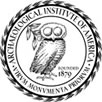A large number of Hellenistic and Roman rock-cut reliefs have been discovered during the archaeological exploration of Pisidia. Among the types represented, most notable are the twin hero-gods, Castor and Pollux, accompanied by an unnamed ‘goddess’, and the local Anatolian horseman, sometimes called Kakasbos. Similar relief types have been identified in northern Lycia, especially in the territories of Oinoanda and Balboura known as the Kibyratis. Many of the reliefs from southwest Anatolia were known previously and had been documented by earlier travelers and epigraphers. This paper presents the reliefs by type and location, and takes a fresh look at their cults and iconography. As permanent votive dedications, the relief carvings (some inscribed) play both devotional and commemorative roles. Their function and iconography also express the importance of protection. It is arguable that the divinities themselves are neither fully Greco-Roman nor fully Anatolian, and that their conflation in this instance is a uniquely local Pisidian phenomenon. The art of rock-carving, as well as the use of votive niches and ‘cup marks’, also point to local practices rather than Empire-wide ones.
Short bibliography and/or website on lecture topic:
- Bean, G.E. 1978: Lycian Turkey.
- Chippindale, Ch. and Nash, G. (eds) 2004: The Figures Landscapes of Rock-Art: Looking at Pictures in Place.
- Coulton, J. J. 2012: Balboura: A Highland City and its Territory. Results of the 1985-1993 Survey Project in Southwest Anatolia.
- Mitchell, S. 1993: Anatolia: Land, Men, and Gods in Asia Minor I.
- Rives, J.B. 2007: Religion in the Roman Empire.
- Smith, T.J. “Highland Gods: Rock-cut Votive Reliefs from the Pisidian Survey”, Anatolian Studies, 61 (2011), 133-50.
